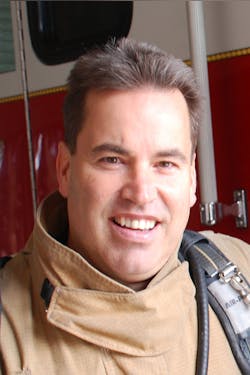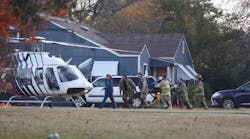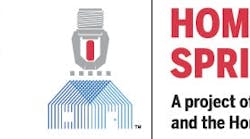Every New Year’s Eve, millions of people make resolutions to change the things in their lives that they don’t like in hopes of improving themselves. They take an honest look in the mirror, and perhaps in their bank account, and allow themselves to acknowledge what they may have known all along. They then vow to make the changes they know are needed. The fire service should take the same approach to the new year if we hope to make our departments stronger, increase our value to the communities we serve and make our communities healthier—because our stakes are much higher than a smaller waistline.
Mirror, Mirror, On the Wall…
So it’s time to look in the mirror and honestly acknowledge what is, and what has been, painfully obvious not only all year long, but for almost two decades. What does our mirror tell us? Well, according to the NFPA. Since 1999, we’ve seen a modest 29 percent decrease in fires. This would indicate some success in our war against our oldest tool and our deadliest terrorist; however, when looking at residential fires, where the majority of all fire deaths still occur (81 percent in 1999 and 84 percent in 2014), our victory has been reduced to a stalemate, with a less-than-respectable 4 percent decrease in fires—in almost two decades.
Now I’m just a back-step firefighter and certainly no analyst, but we must ask ourselves an honest and logical question regarding the differences in these numbers: Could the 29 percent decrease in overall fires contrasted against the meager 4 percent decrease in house fires indicate that public fires, the most influenced by fire codes and prevention, carried the fire reduction load? If so, that would mean that home fires, which have been only minimally impacted by fire codes when compared to prevention education, are an indication of where we are failing as a fire service.
Other Realizations
From 2007 to 2011, 60 percent of all fire deaths (three out of five) occurred in homes without smoke detectors or in homes where they were present but did not operate, and the leading cause for failed smoke detectors was missing, disconnected or dead batteries, aka human error, as are the leading causes of house fires, according to both the NFPA and the USFA. Human behavior, driven by human attitude, is the common thread, and that can only be influenced through personal contact and education.
When simply reading these numbers from easily accessible and readily available NFPA reports, we can safely assume that prevention does work and smoke detectors do save lives, and when in the public arena where these elements can be enforced, we are victorious in this mêlée; however, when in the privacy and sanctity of a person’s residence, where only personal contact and education can influence the results, we are losing the battle.
Many who wear the badge in the name of protecting their citizens will discount these findings by blaming society and its apathy toward fire as reasons for these numbers; they may also blame the fire service’s inability to control and influence them. While these same firefighters would rush into a flaming inferno against all odds if there were even the slightest possibility of saving a life, they would also throw up their hands in defeat when faced with those same perceived odds if faced with saving a life through prevention education, such as participating in a neighborhood smoke detector blitz.
The Red Cross Steps Up
But something more telling occurred in 2015. Other objections to elevating prevention activities within the fire service include time, personnel and funding. Yet the American Red Cross, driven purely by desire to help their communities, managed to install 100,000 smoke detectors in U.S. homes in just 10 short months by utilizing volunteers and donations.. They simply saw a community need, and were willing to step outside their traditional disaster response. They redefined their goals to encompass a service that the community valued and desired, made no excuses and got the job done. The risk of fire deaths just decreased by 100,000 homes in 10 months. Thank you, Red Cross.
Success on All Fronts
So let’s summarize what our “mirror” is telling us. Prevention works, smoke detectors save lives, the belief in the public’s lack of concern and interest in prevention and smoke detectors has proven false, and a volunteer, non-profit entity has reinvented itself to take on this endeavor—with tremendous success.
So what should we aim for in 2016 to strengthen our departments and provide a better service to our citizens? To win a war, you must be successful on all fronts, and on the suppression front, we continue to be victorious, but on the prevention and education front, our battle reports show we are in a stalemate at best. You also don’t win a war by taking resources from one front and applying them to another; rather, you reinforce the fledging front.
To reinforce our educational/prevention front, which is costing us lives due to predictable and preventable causes at a rate of seven per day, we can take some simple steps that can produce life- altering results for those who depend on us. It’s a simple “who, what and where” formulary; the “when,” of course, is now. Determine your answers to these questions:
- What are the demographics (elderly, single-parent homes, juvenile fire-setters)?
- Who else may be a stakeholder or already working in your community that can assist you?
- Who are your media contacts and how can you best disperse public information releases?
- What are the top three causes of fires?
- What prevention elements can address these causes?
- Where in your community is your fire problem and how can you reach it? [Eds: As meant?
A Resolution for All
Saving a life, even just one, against all odds and obstacles, is who we are and what we are about. The attitude that we bring to the fireground is the same one we need to bring to our prevention efforts. One smoke detector, one personal contact, can save a life. Make that your New Year’s resolution.
And before you discount this article and roll your eyes, let’s take one more look in the mirror. In this reflection are your “brothers” (male and female), with their families looking back at you. Now, consider this battle report: In 2014, one-third of all on-duty firefighter deaths occurred on the fire-ground. Sixty-four percent of those LODDs occurred in residential structures, including the multiple firefighter deaths that occurred in apartment complexes. Your community’s fire problem is ours too.
So, what are your resolutions, and what will 2016 say about you and your department?






